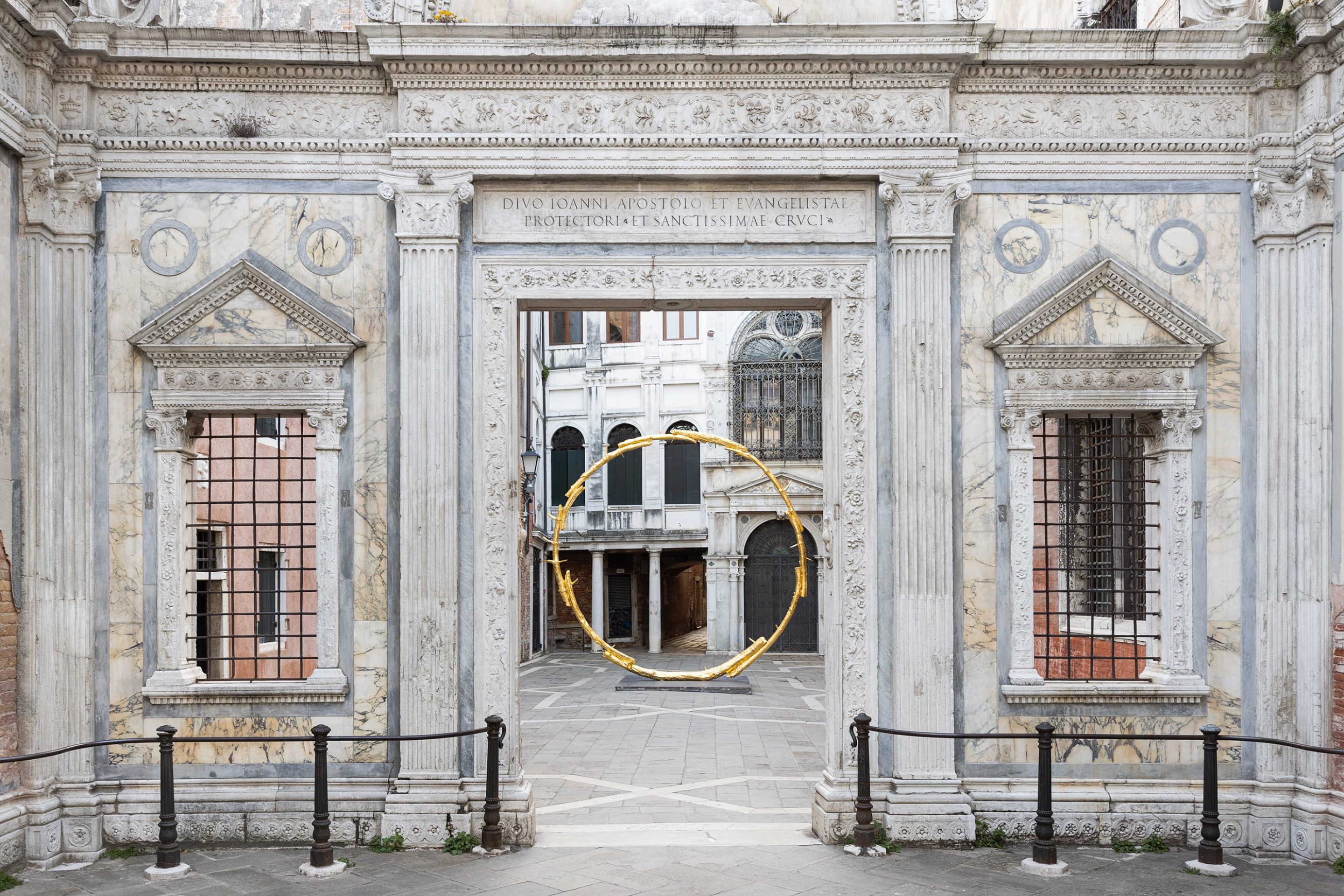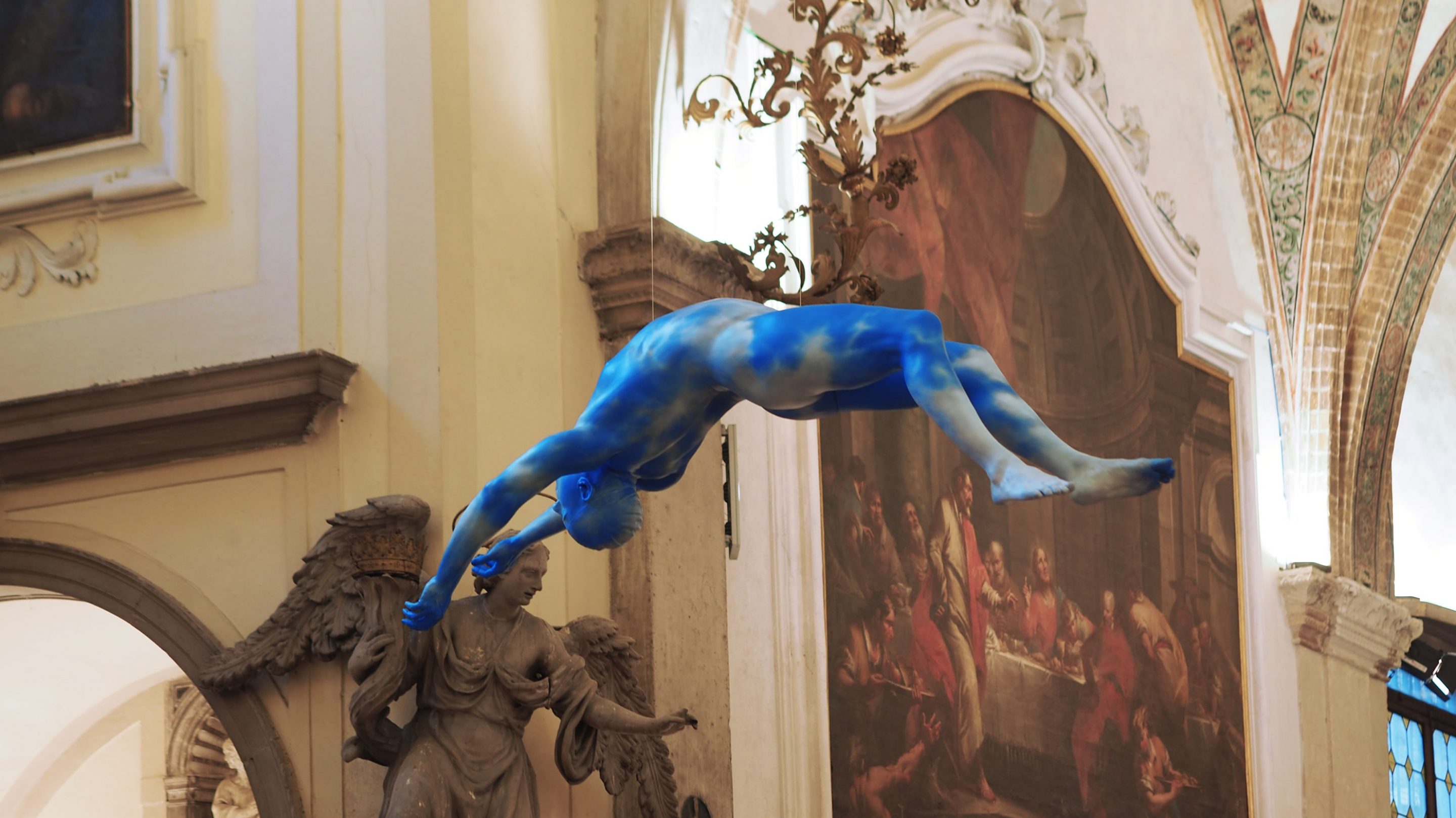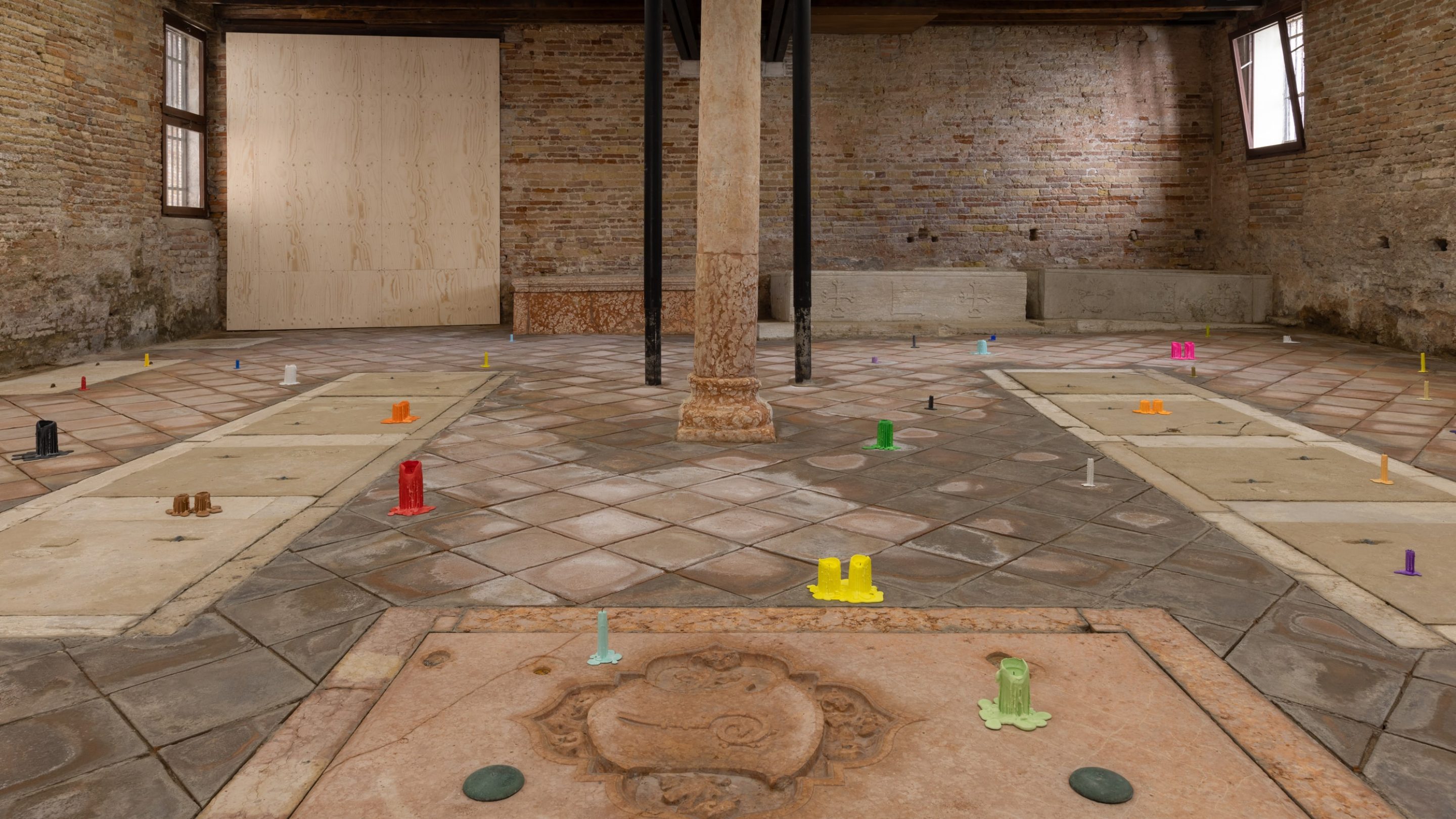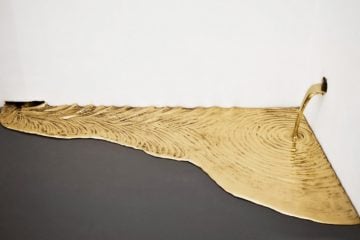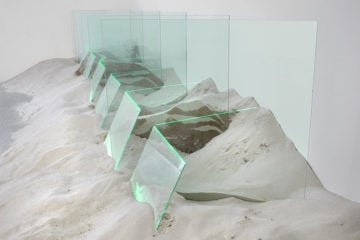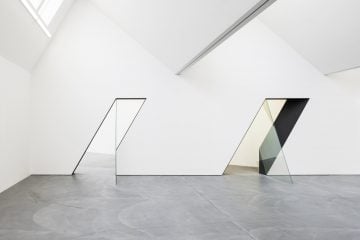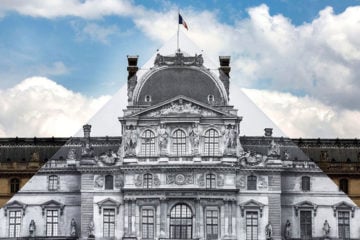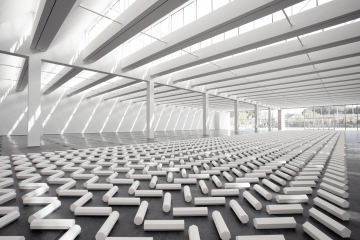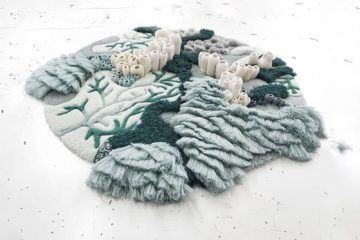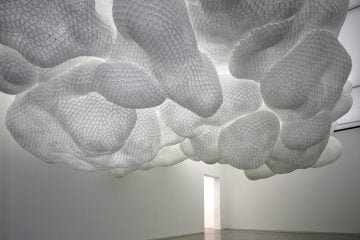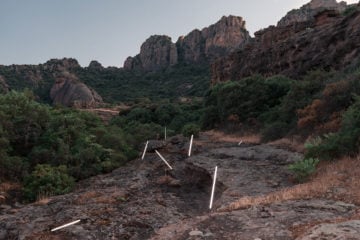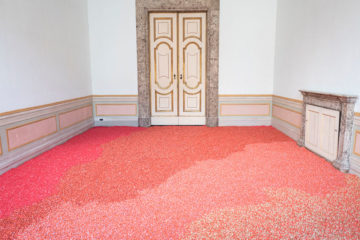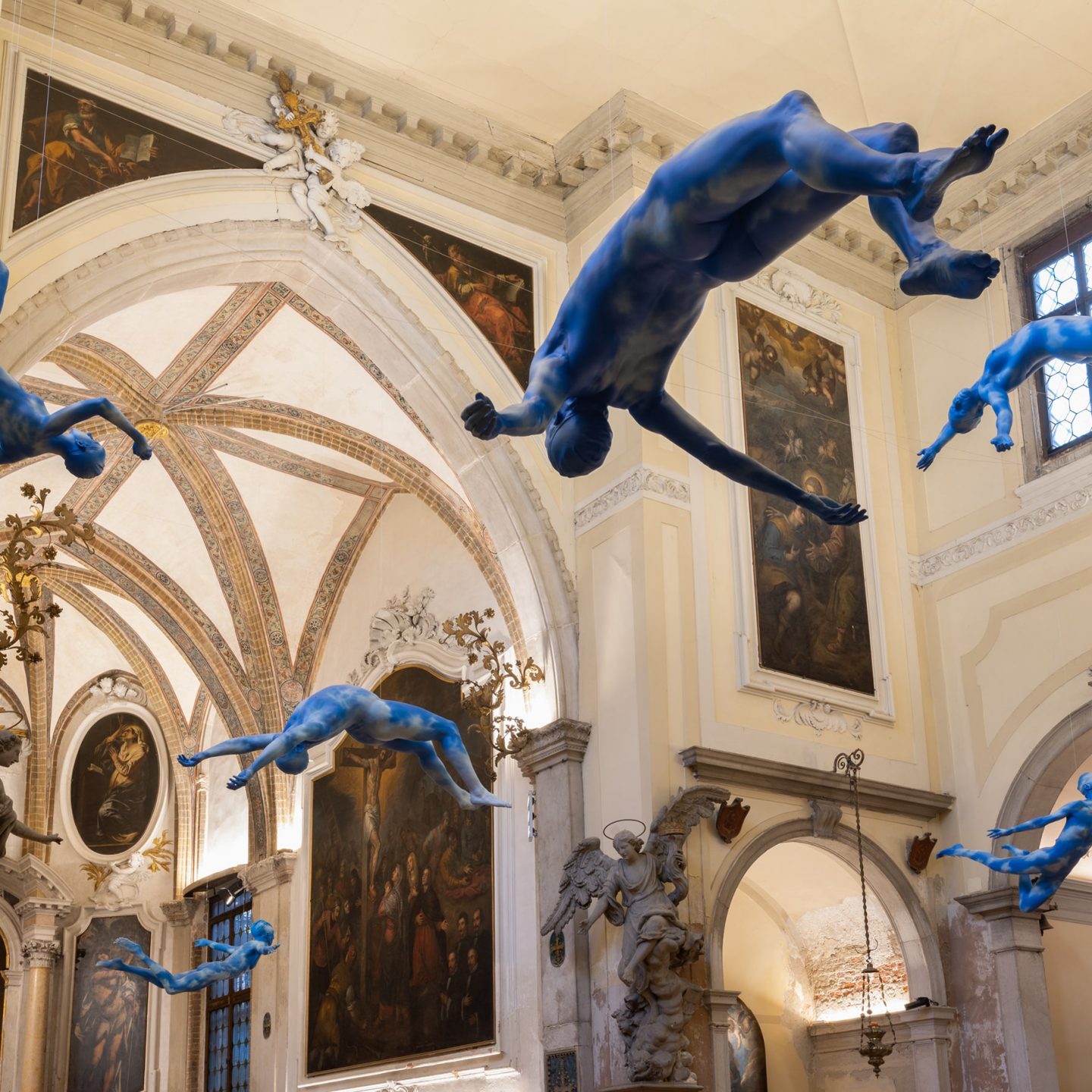
In Venice, Burn Shine Fly By Ugo Rondinone Reflects On The Intrigue And Beauty Of Life
- Name
- Ugo Rondinone
- Project
- burn shine fly
- Words
- Devid Gualandris
As the Venice Biennale returns with an exciting programme of art after three long years, beyond the pavilions in the Arsenale and Giardini, the Italian city is bursting with gripping exhibitions throughout. Joining the world’s art aficionados, IGNANT made the pilgrimage to the city of canals to experience the long awaited show by New York-based artist Ugo Rondinone, burn shine fly.
Ugo Rondinone needs no introduction. A household name in the art world, he is considered amongst the most exciting voices of his generation, responsible for some of the most memorable installations of the past decades. Originally from Switzerland, he creates mixed-media work that is known the world over, with exhibitions in renowned institutions and site-specific works in disparate environments—from France to South Korea, from Colombia to the Nevada desert. Whether colorful, monumental, or evocative, Rondinone’s art is sure to add visual interest to any space, captivating and provoking visitors with its seductive beauty and storytelling.
On the occasion of the 59th Venice Biennale, the general public is treated to yet another rewarding insight into the artist’s unique oeuvre and insatiable creativity. Curated by Javier Molins and conceived with the support of six acclaimed galleries—Esther Schipper, Berlin; Galerie Eva Presenhuber, Zürich, Sadie Coles HQ, London; Gladstone, New York; Kamel Mennour, Paris; and Kukje Gallery, Seoul—this major solo exhibition features one of Rondinone’s most iconic sculptural works, alongside new fascinating installations created specifically for the eagerly awaited artistic event. Titled burn shine fly, the show is installed within the monumental complex of the Scuola Grande San Giovanni Evangelista, one of the most relevant and historic scuole in Venice, dating back to the 13th century. A compelling blend of Gothic, Renaissance, and Venetian Baroque art, its walls have housed treasures ranging from relics of the True Cross to works by renowned Venetian Renaissance artists, such as Carpaccio and Bellini.
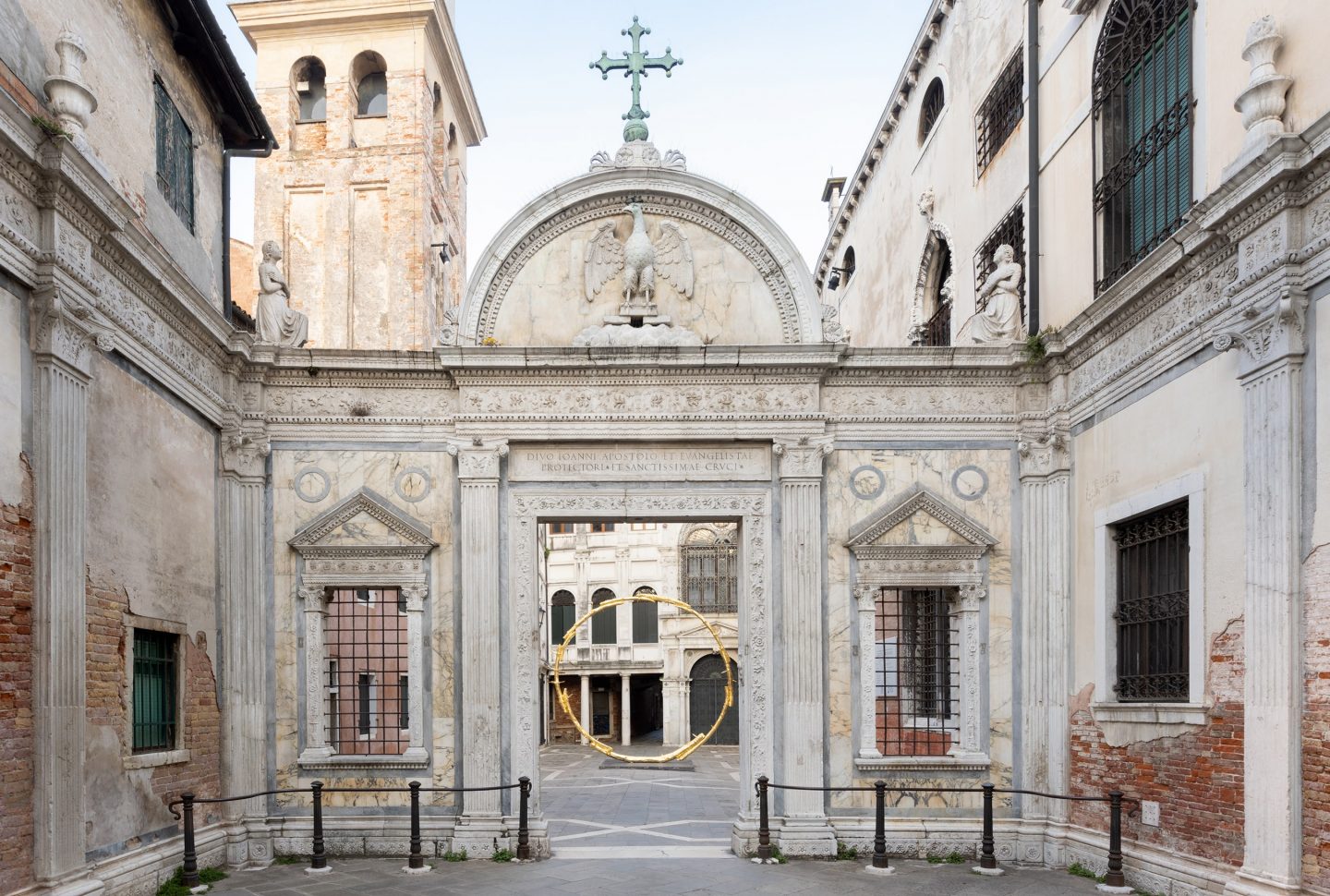
Image © Andrea Rossetti
Approaching the exhibition from one of Venice’s picturesque cobblestone streets, passersby are instantly greeted by a giant gilded ring, set in the quadrangular sculptural stone courtyard at the entrance of the scuola. Symbolizing the sun, the sculpture has an impressive height of over five meters and is made from branches knotted together, cast in bronze, and gilded by the artist. Now glowing in the Campiello courtyard, the piece was originally created for the garden of Versailles in 2017. “The sun sculpture is not only an investigation of the mutable potential of sculpture as both a physical medium and a site of rich cultural discourse in art, but also a celebration of life. Its seasons and rhythms, its plants and stones, with which we share the planet and our own wild life,” Rondinone explains about the work.
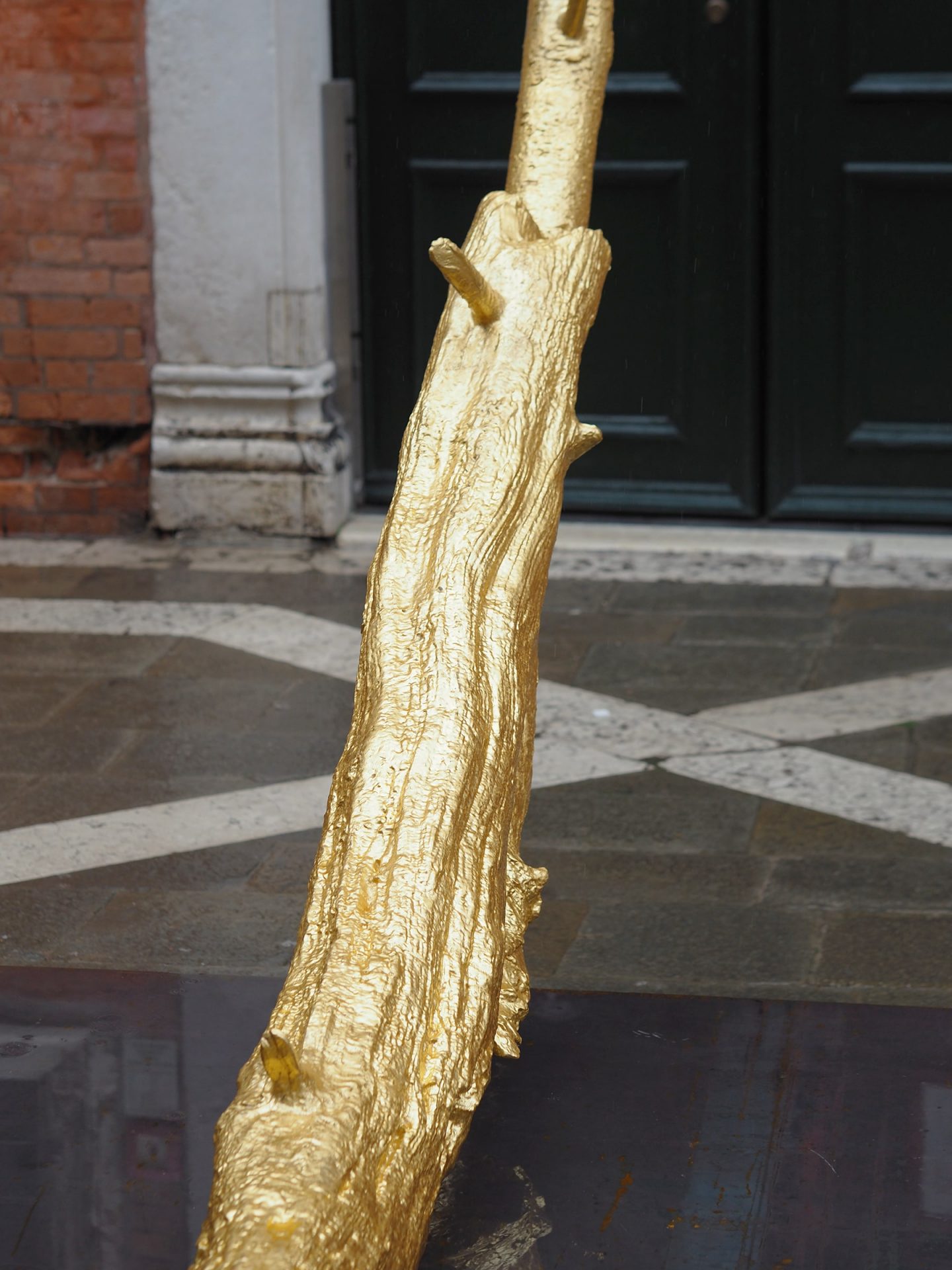
Image © Devid Gualandris
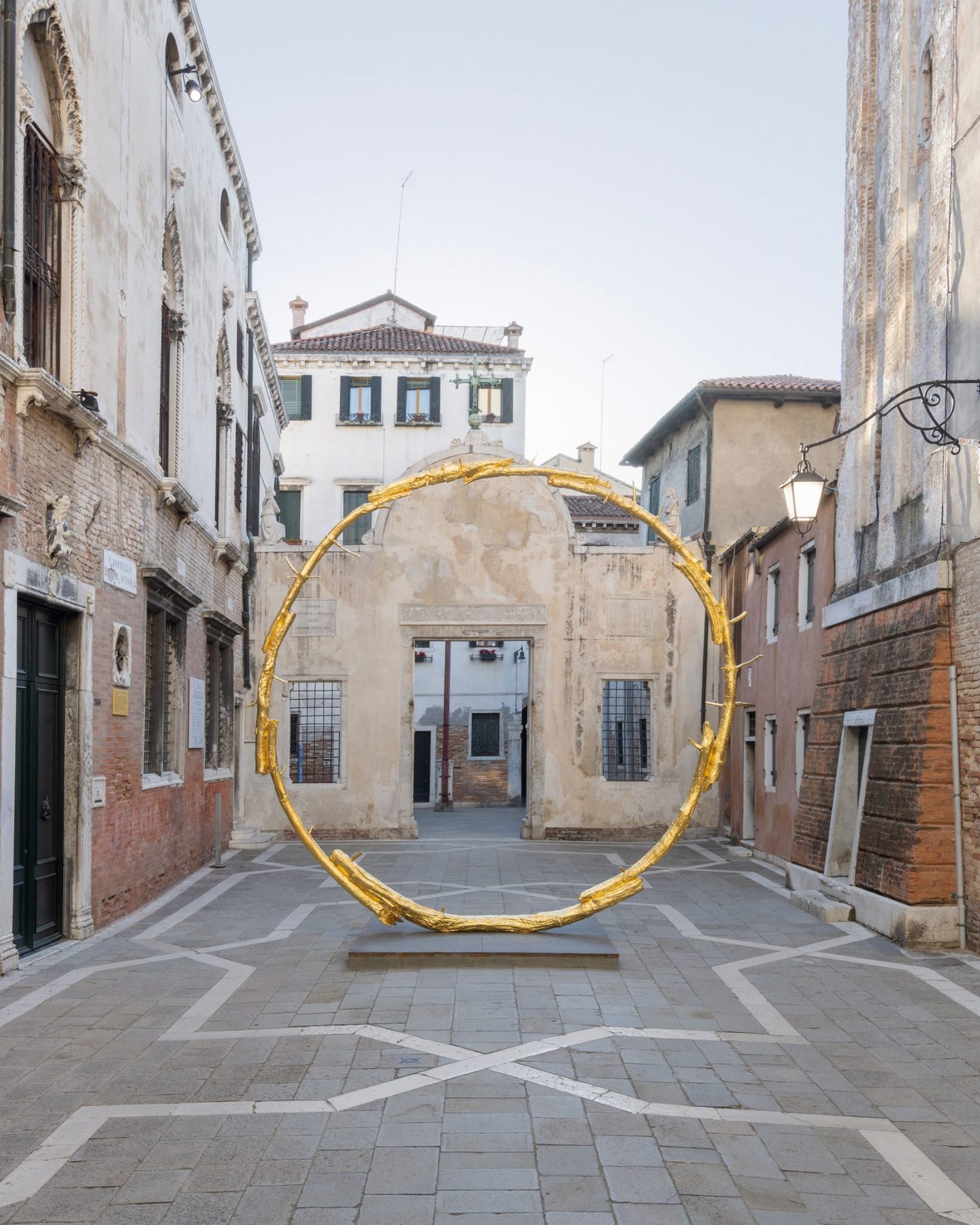
Image © Andrea Rossetti
Leaving the courtyard behind, visitors find the new production by Rondinone; another enthralling meditation on humanity, which is not only utterly absorbing, but destined to become the exhibition’s highpoint. In the Chiesa—Italian for ‘church’—seven human-sized casts of nude dancers camouflaged as cloudy blue skies hang from its ornate vaults. Floating mid-air, as if freely flying in the nave and upper reaches of the room, the figures are a modern reinterpretation of a ceiling painting of flying angels by Italian Renaissance artist Jacopo Tintoretto. Although specifically conceived for the show, the installation was created in a wider context—the seven bodies are part of a trilogy project started in 2009 which connects humans with the elements of nature. “In 2009, I made casts of 14 dancers in contemplative positions, made with a mix of transparent wax and soil sourced from all seven continents,” explains the artist. “Last year, I started a new video installation with 18 dancers dancing around a fire in the desert from sunset to sunrise. They merge with the fire and obtain by sunrise a new life cycle. The flying body-clouds mark the end of a trilogy where the human body merges with the natural elements: soil, fire, water, and air.”
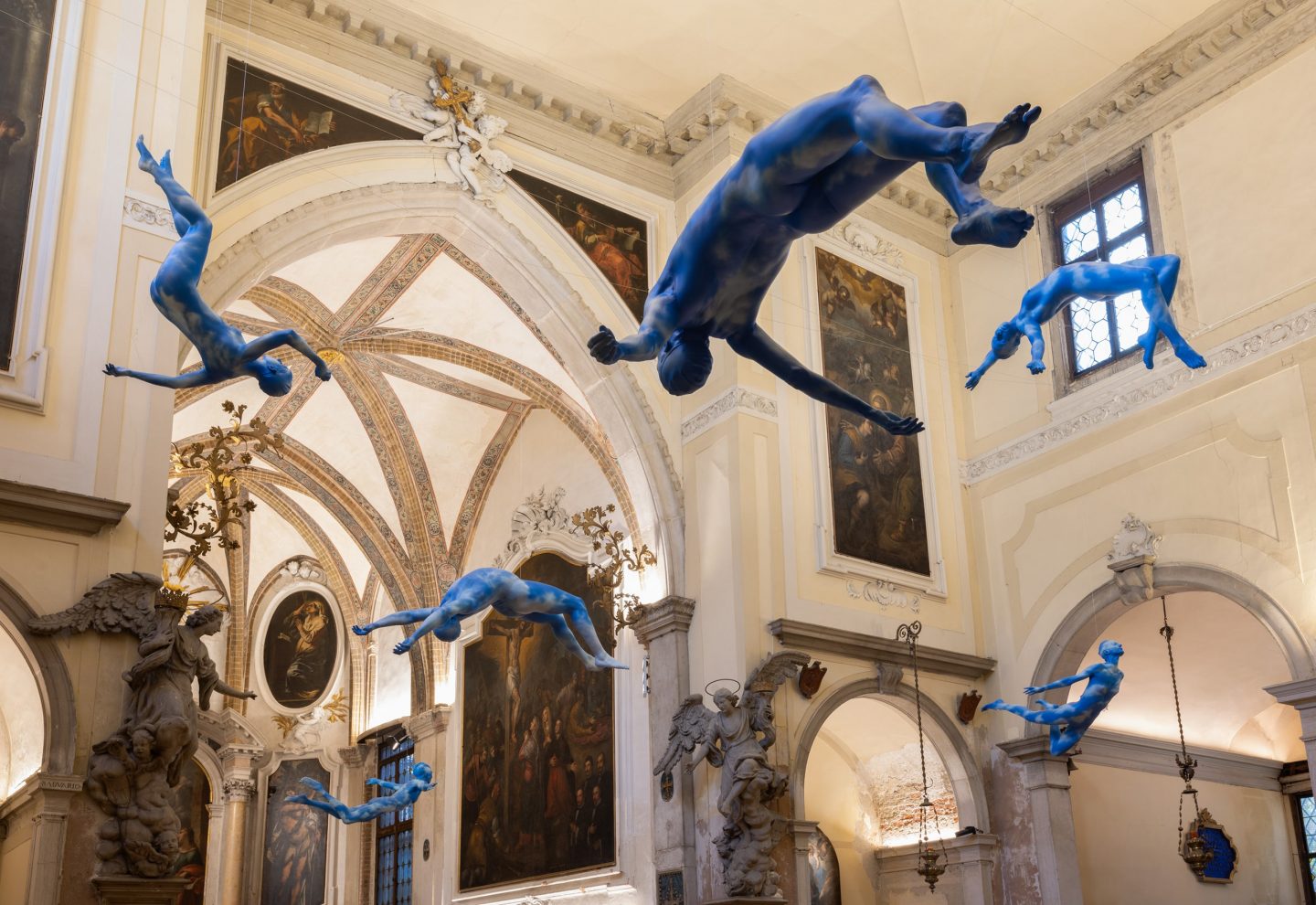
Image © Andrea Rossetti
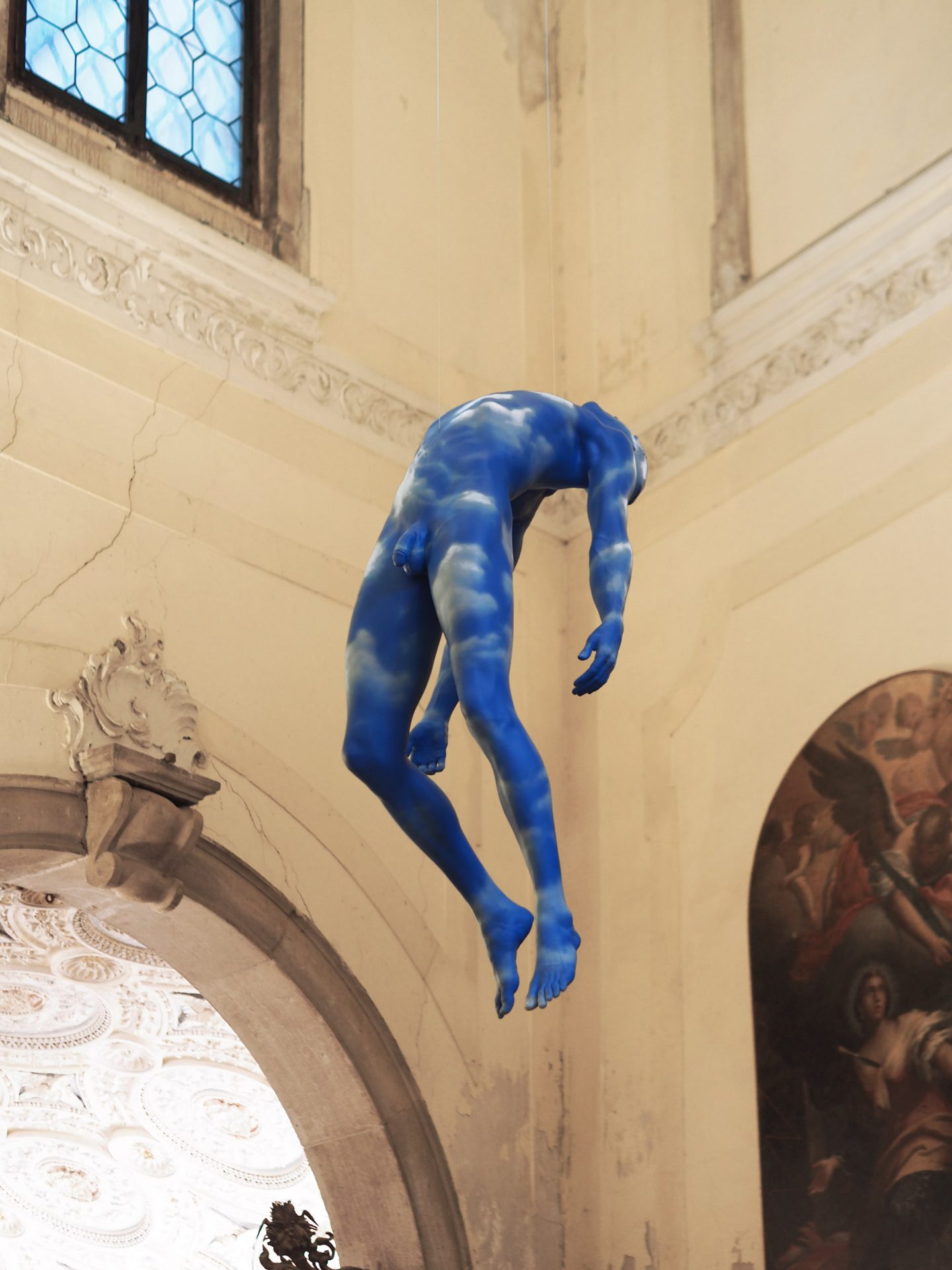
Image © Devid Gualandris
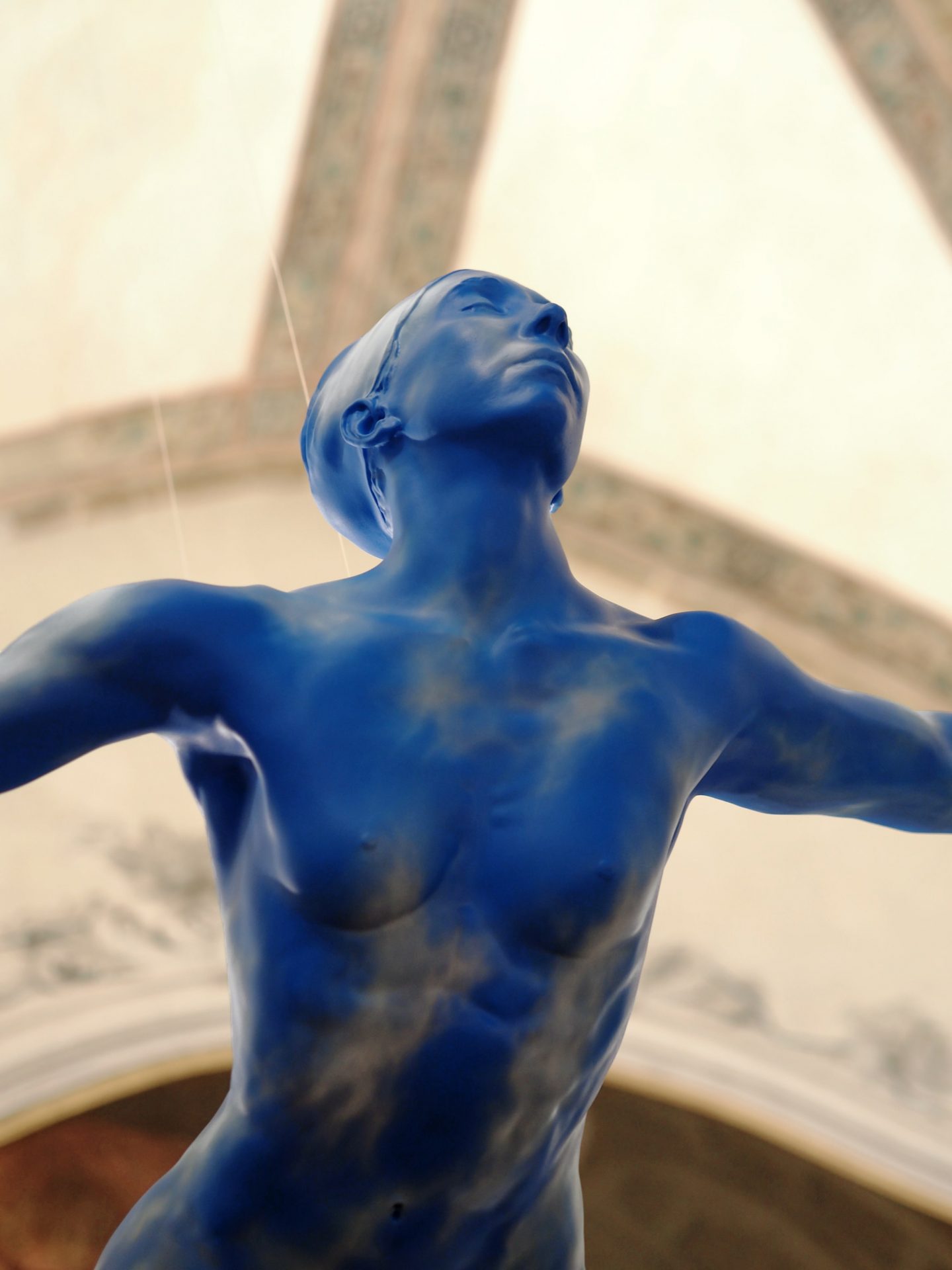
Image © Devid Gualandris
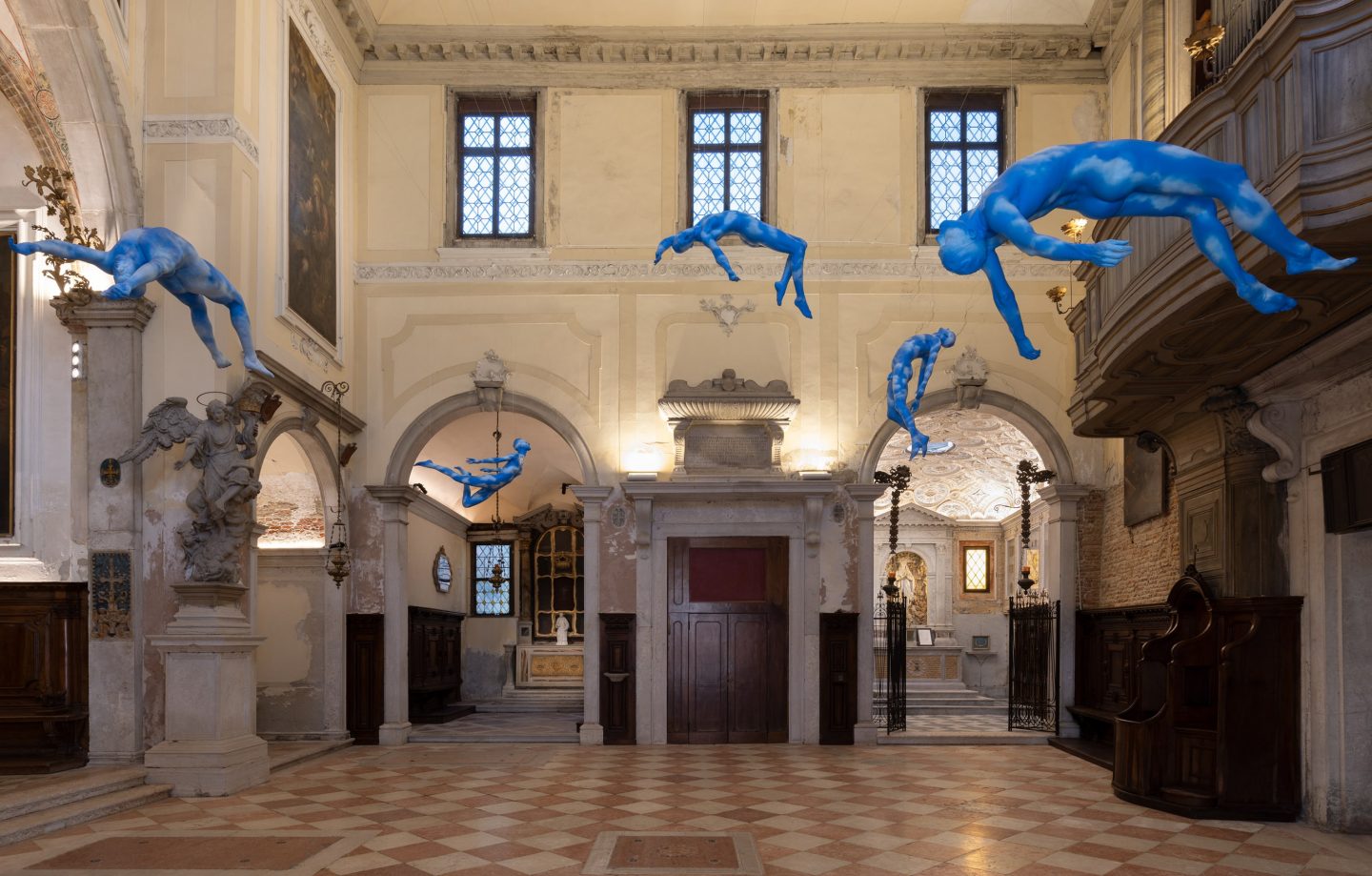
Image © Andrea Rossetti
Next door, in the more intimate and rather constrained room, 80 candles sit above the graves of the large crypt. Cast in bronze and pastel-pigmented, they belong to the ongoing 2013 series still.life, which seeks to give everyday objects new meaning and artistic value. Placed directly on the floor in an organized composition, the candles look like distant and mysterious objects, rather than simply small ornaments. “The candle puts a lot of ground between itself and the viewer, asserting its own presence—that of the empty and surrounding area, and that of the solidly horizontal place on which the candle rests,” explains the artist. Sculptured in a permanent half-burned state, they gently invite viewers to reflect on the condition of the imperfect eternity, to which Rondinone’s work is destined.
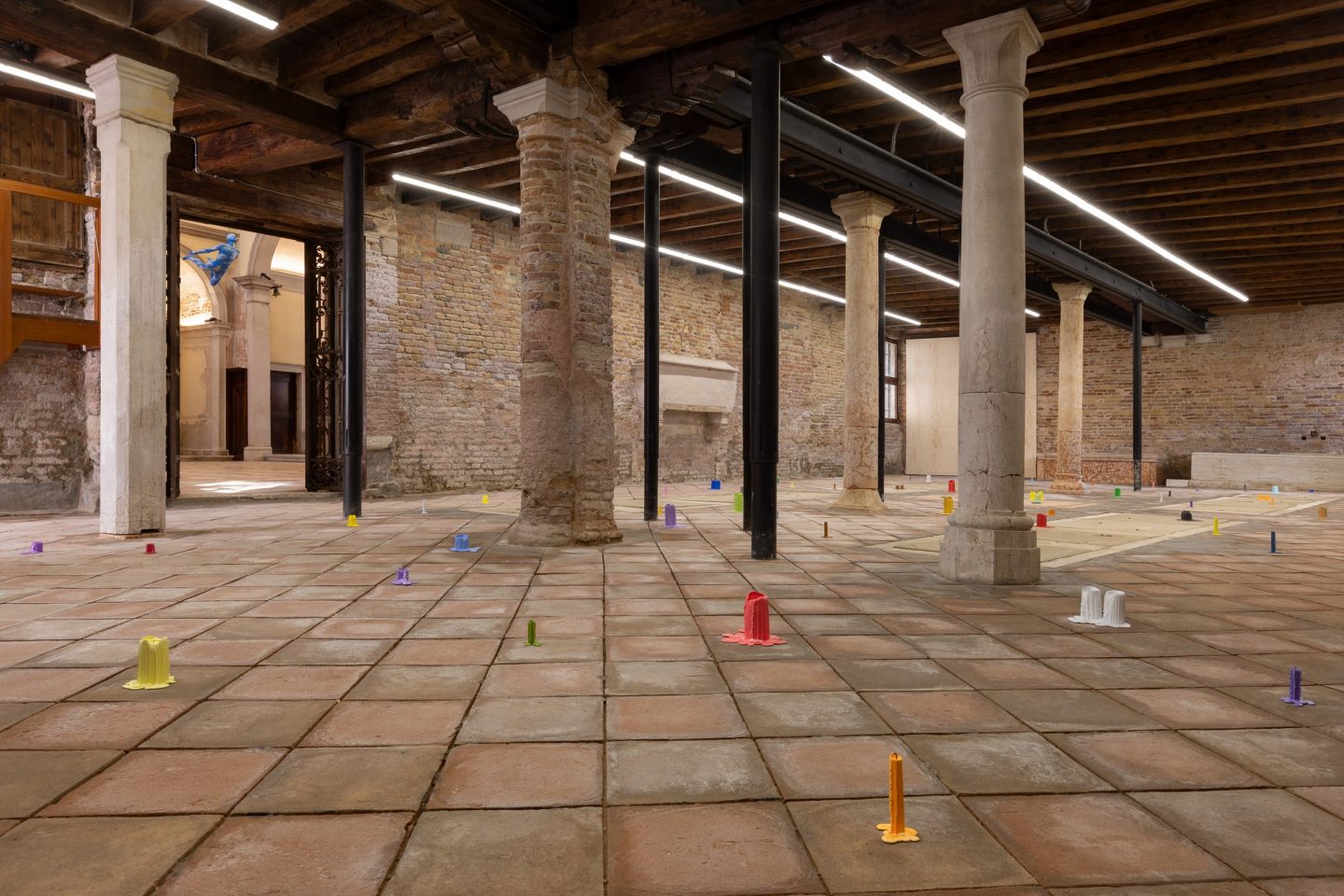
Image © Andrea Rossetti
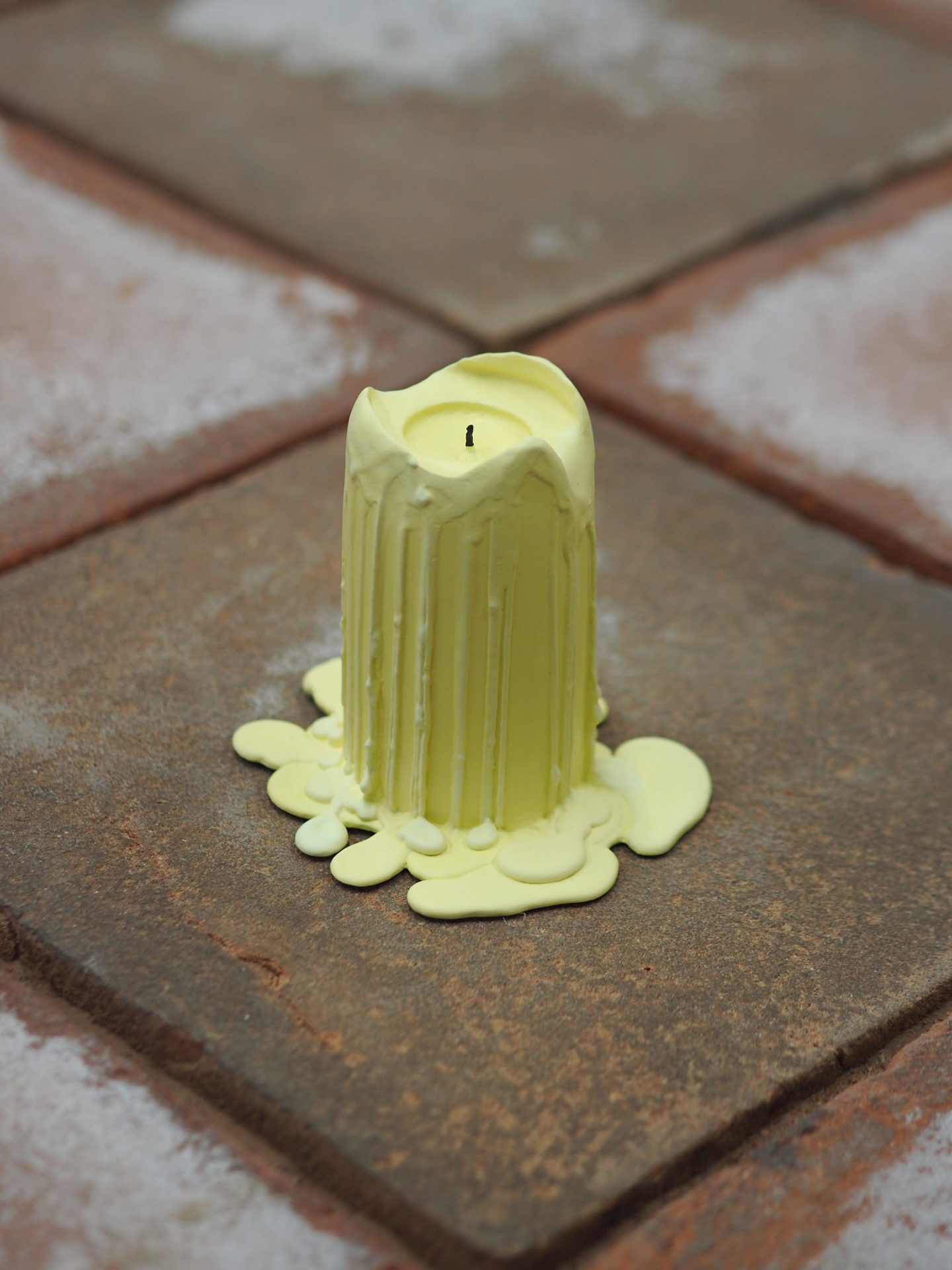
Image © Devid Gualandris
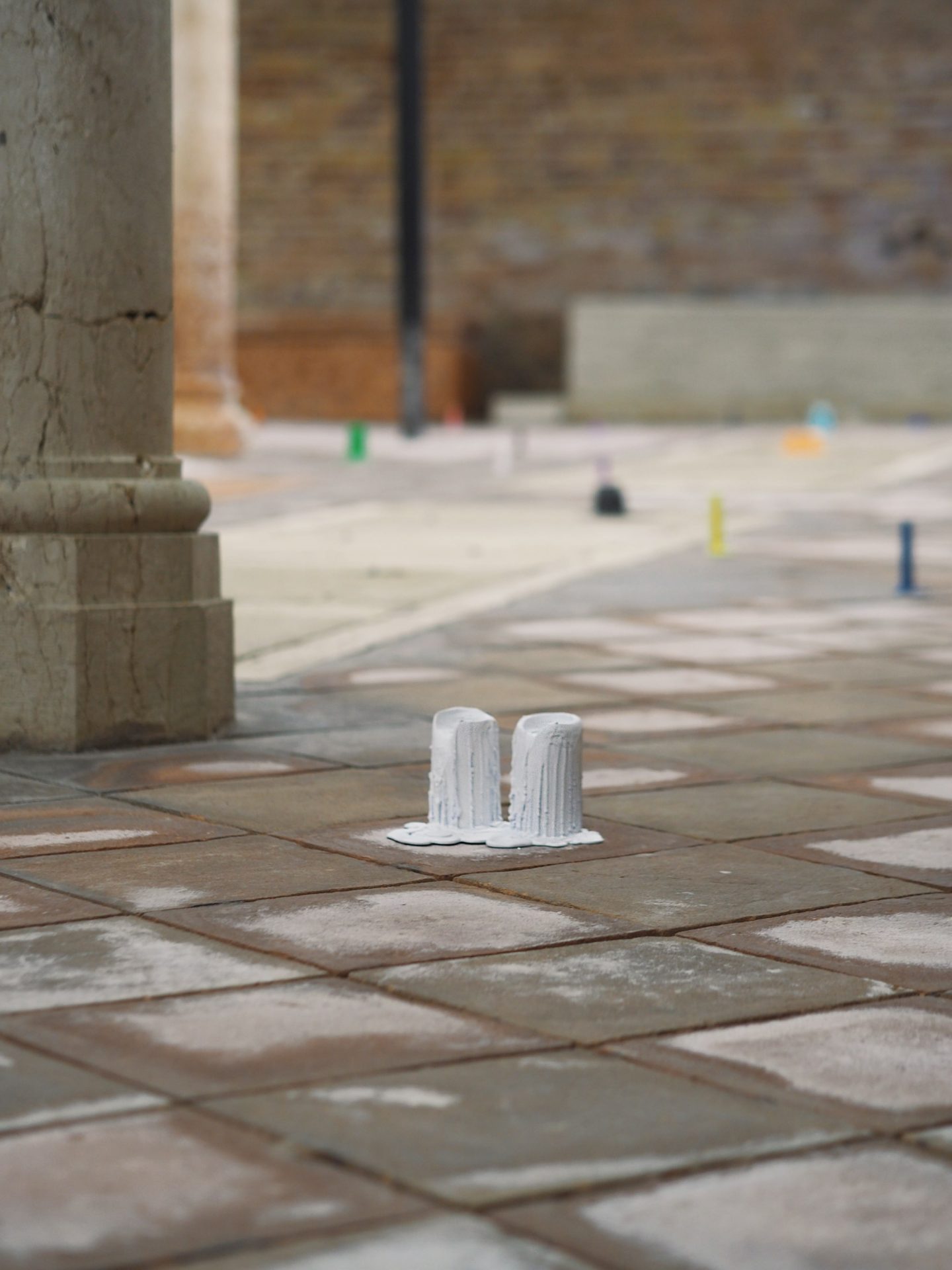
Image © Devid Gualandris
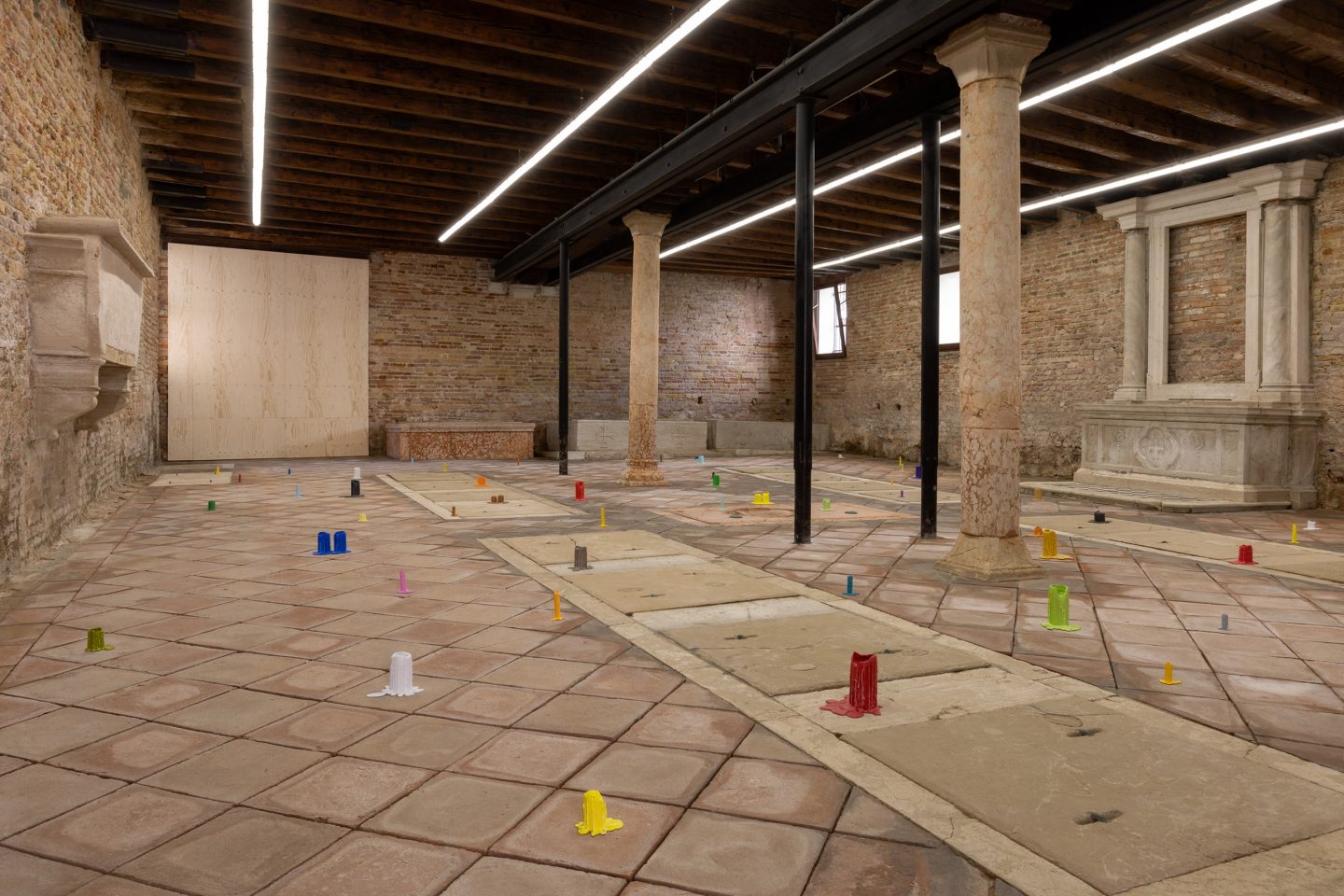
Image © Andrea Rossetti
"The works should send us into a deep reflection about the marvels and mysteries of life"
Descriptive of the three bodies of work, burn for the candles, shine for the sun, and fly for the human clouds—the three verbs that make up the show’s title—are inspired by a 1994 book of poems by Rondinone’s late partner John Giorno, titled You Got to Burn to Shine. The content of the literary work notes a Buddhist teaching emphasizing that in order to shine (and then rise and dissolve) one must first suffer. “The sculptures in burn shine fly aim to engender an altogether contemporary version of the sublime,” explains the artist, “one in which the smallest candle sculpture is of no less consequence than the overarching totality of the sun sculpture or the stellar marriage of the earthbound body with the water-filled sky.” Coaxing the sublime from the subliminal with new and old works, Rondinone marks yet another step on his searing and intensely layered meditation on nature and the human condition, with all its frailties and graces. “The works should dazzle us and send us into a deep reflection about the marvels and mysteries of life,” he shares.
burn shine fly is on display at Scuola Grande San Giovanni Evangelista in Venice, Italy, until September 17, 2022
Courtesy the artist; Galerie Eva Presenhuber, Zurich; Esther Schipper, Berlin; Sadie Coles HQ, London; Gladstone, New York; Kamel Mennour, Paris; Kukje Gallery, Seoul
